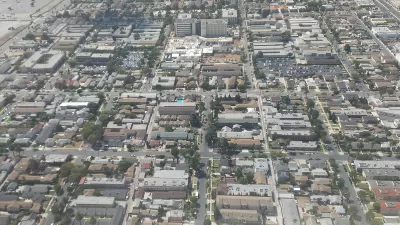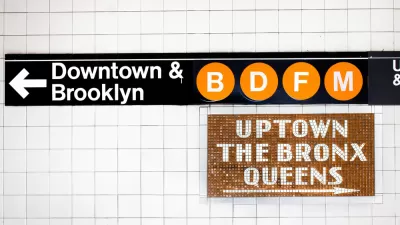City Observatory's Joe Cortright examines how immigration rates affect regional economic development. This research indicate that policies that exclude immigrants are not only mean, they are also stupid.

"America is a nation of immigrants, and its economy is propelled and activated by its openness to immigration and the new ideas and entrepreneurial energy that immigrants provide," writes Joe Cortright, in a focused response to recent proclamations by the Trump Administration limiting immigration and travel to the United States.
Cortright provides numerous examples of the obvious and out-sized benefits famous immigrants have offered the United States, before turning his attention to the scale of the contribution to the U.S. economy by "foreign-born talent."
"Several of the nation’s most productive metropolitan areas–San Jose, San Francisco, New York and Seattle–all have above average levels of foreign-born persons among their best educated," according to Cortright.
And in case you're looking for a succinctly phrased, but still multi-faceted argument against the Trump's Administration policies, here's Cortright's concluding paragraph:
There are a lot of reasons to oppose President Trump’s ban on immigration from these Islamic countries. The most important reasons are moral, ethical and legal. But on top of them, there’s a strongly pragmatic, economic rationale as well: the health and dynamism of the US economy, and of the metropolitan areas that power the knowledge-driven sectors of that economy, depend critically on the openness to smart people from around the world.
FULL STORY: Openness to immigration drives economic success

Planetizen Federal Action Tracker
A weekly monitor of how Trump’s orders and actions are impacting planners and planning in America.

Chicago’s Ghost Rails
Just beneath the surface of the modern city lie the remnants of its expansive early 20th-century streetcar system.

San Antonio and Austin are Fusing Into one Massive Megaregion
The region spanning the two central Texas cities is growing fast, posing challenges for local infrastructure and water supplies.

Since Zion's Shuttles Went Electric “The Smog is Gone”
Visitors to Zion National Park can enjoy the canyon via the nation’s first fully electric park shuttle system.

Trump Distributing DOT Safety Funds at 1/10 Rate of Biden
Funds for Safe Streets and other transportation safety and equity programs are being held up by administrative reviews and conflicts with the Trump administration’s priorities.

German Cities Subsidize Taxis for Women Amid Wave of Violence
Free or low-cost taxi rides can help women navigate cities more safely, but critics say the programs don't address the root causes of violence against women.
Urban Design for Planners 1: Software Tools
This six-course series explores essential urban design concepts using open source software and equips planners with the tools they need to participate fully in the urban design process.
Planning for Universal Design
Learn the tools for implementing Universal Design in planning regulations.
planning NEXT
Appalachian Highlands Housing Partners
Mpact (founded as Rail~Volution)
City of Camden Redevelopment Agency
City of Astoria
City of Portland
City of Laramie




























